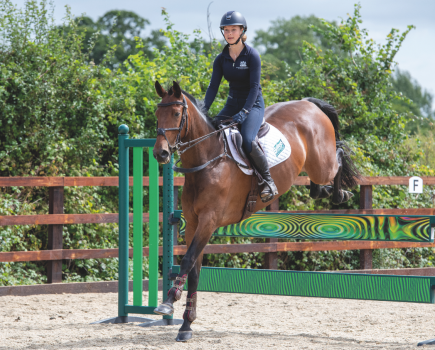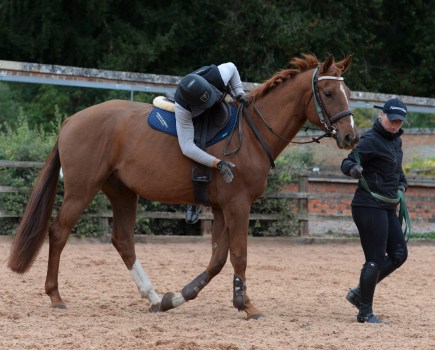A confident cross-country horse needs to have a range canters and gallops that you can use during your round or schooling session.
These are key to speed, safety and having a smooth ride so that you can meet each fence at an appropriate pace, which in turn will help you both have a confident round.
During a training session with esteemed eventing coach Caroline Moore, who sadly passed away in March 2025, she recommended that a horse has five gears for their rider to choose from in order to have a successful cross-country ride.
This strategy was quoted by Libby Seed at this year’s Mars Badminton Horse Trials.
The top-level rider, who has a full-time job outside of horses, says she has used Caroline’s advice to get her gears in place in order to be quicker — and therefore more competitive — on cross-country day.
Caroline was dedicated to coaching and educating riders, and she worked with us at Your Horse on multiple occasions to share her words of wisdom with others. We feel that the right thing to do is keep this training article on our website in her memory.
The gears
According to Caroline, with correct and clever use of these five cross-country gears, you will be able to complete a course clear and within the optimum time.
A horse who is listening to you and responsive to your aids — rather than pulling or being so keen that they are reluctant to slow down — will give you a smoother ride.
They will be quicker too, even if they don’t have as fast a top speed as other horses, as they don’t waste time changing between their gears and setting up for each fence.
First cross-country gear
Trot
What it is: “You’ll rarely use this gear; it’s reserved for specific jumping efforts or for when the horse is unsure,” explains Caroline.
When to use it: jumping off a big step, or over a ditch or into water with a young horse.
How to ride it: “Have the horse between your leg and hand, with your leg aids encouraging them to be well connected into the rein.”
Second cross-country gear
‘Coffin canter’
What it is: “This is the shortest canter, which is high-powered with a short base,” says Caroline.
When to use it: any cross-country fences with a surprise on landing (such as a coffin), and anything especially upright, such as a gate.
How to ride it: “Tighten your core and shift your balance back to encourage the horse’s shoulder up,” advises Caroline. “You’ll feel the power coming from their hindlegs, but don’t allow it to escape out the front. Keep their frame short and the neck soft.”
Third cross-country gear
Related distance canter
What it is: “Think of this as being a big showjumping canter combining a high degree of power and control with a more positive stride,” advises Caroline.
When to use it: upright fences, skinnies and related distances
How to ride it: “Maintain power in the horse’s hindquarters and shoulder control, but allow your horse’s frame to lengthen into a more purposeful stride.”
Fourth cross-country gear
Gallop
What it is: “This is a ground-covering pace for wide, single soft profile fences and sub-optimal ground conditions,” says Caroline.
When to use it: logs, rolltops, hedges and deep or ridgey ground
How to ride it: “The rider should be in a light seat, with secure lower leg and a rein contact you’re happy to jump from. Allow your horse to come in front of the vertical as they lengthen their body and gait.”
Fifth cross-country gear
Top speed
What it is: “Top speed is your fastest pace on course to help you make up time and avoid penalties. You’ll be doing this between fences that are spaced well apart,” states Caroline.
When to use it: in between cross-country fences
How to ride it: “When travelling at your horse’s top speed, you should be in a two-point seat with your leg secure, following the horse’s stretched neck with your hand.”
Remembering Caroline Moore
Caroline was devoted to horse sport, particularly eventing, and highly regarded as a coach around the world. She trained some of eventing’s brightest stars and also competed up to 5* level in her own right. Caroline co-owned Allstar B, who carried Ros Canter to gold at the 2018 World Equestrian Games, and instigated the Performance Mentoring Programme, which will continue in her honour.
Main image of Pippa Funnell and Majas Hope competing at Defender Burghley Horse Trials by Trevor Holt









